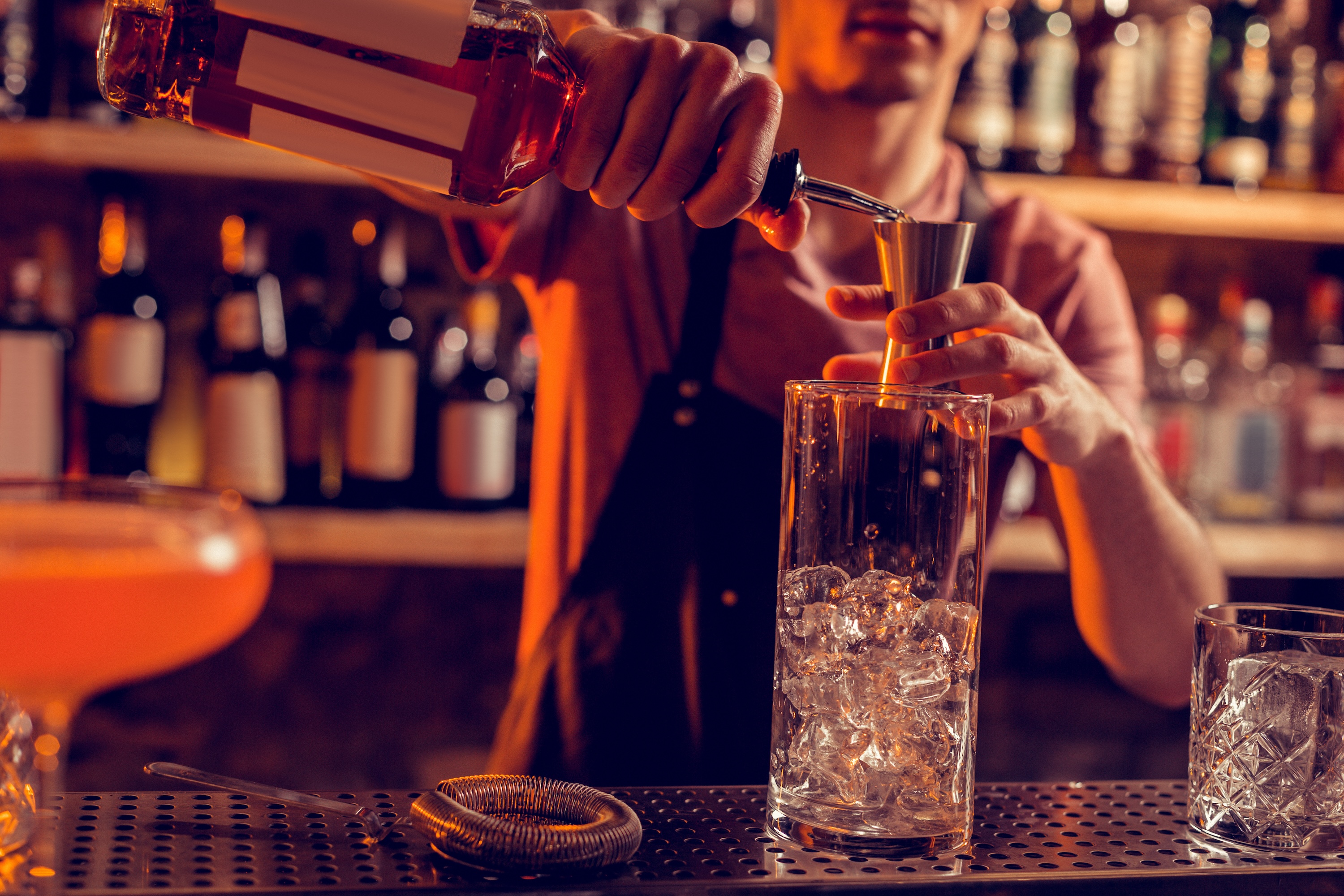
There’s a new drinks trend lining up, and it falls in the wake of recent developments ranging from the Espresso Martini to popular mocktail recipes. This time, we’re dealing in spirits that are frankly, well, hard to define. Not quite gin, not quite vodka, nor whiskey, nor rum, these new additions are challenging palates and bringing new tools for bartenders to play around with.
Sometimes, these new liquors are modeled after age-old recipes. In other instances, they’re something new entirely, a familiar base treated to new infusions or a wholly new base altogether. For imbibers, that’s exciting news.
Javelle Taft is the head bartender at Death & Co in NYC. He and his team are excited about the newest installments in the spirits realm, many of which don’t fit cleanly into one particular category or the other. We picked his brain about the newest movement in drinks land and what to do with these new options. Read on to learn more about the new liquor movement.
The new and hard-to-categorize liquors

“When curating drinks with any spirit, I find it’s more digestible when the cocktails are developed with a traditional classic template,” says Taft. “Let go of the idea of curating a gin or tequila drink per se. More interestingly, try to develop the sensation through flavor and texture.”
He drops some producer names, like Empirical Spirits, Freimeister Kollektiv, or Matchbook Distilling, that are innovating within the sector. “They allow the bartenders to explore classic cocktail templates in a way that is very exciting and pushes us in how we think about drinks,” he says. His team worked with Matchbook on a spirit called Hi & Hello. “It was a base spirit made from Kasu — the lees from Sake production — that is infused with pineapple, chamomile, and lemon verbena,” Taft says.
Matchbook is making everything from a strawberry amaro to a spirit out of sun choke and honey. Empirical Spirits, perhaps most known for its viral — and questionable — creation of a nacho cheese spirit modeled after Doritos, is also making ayuuk and botanical beverages employing things like pilsner malt and fig leaves. And that’s just the tip of the iceberg.
Producers are trying their hands at everything, from new styles of brandy made with fruit beyond wine grapes to cool co-fementations. Others, like Archival Spirits, are unearthing old recipes that may have never been popular here in the states until now (per the brand’s fantastic Vin d’Orange).
Using the new liquors

How does one use these new drinks? Mix ’em up, of course. Death & Co just created something called the Omiki, a cocktail that reexamines one of the main pillars of a classic drink. “When developing the Omiki I wanted a low-ABV sour with notes of raspberry, vanilla, toasted oat, with winter ground spices,” he says.
“The overall cocktail build is a replica of a traditional sour; however, sake is the base spirit. The complementary components of the cocktail are translucent and direct; however, the star of the show is an Amabuki-style Junmai Sake. This sake is unique because it comes from black rice and marigold flower yeast opposed to brown rice and sake yeast. This gives the cocktail its floral and fruit-forward backbone. Similarly how a wheated bourbon gives you a very light and aromatic whiskey sour, the rice and barley grains are working in harmony to bring this sour to life,” he says.
What’s on the horizon

For Taft, a lot of interest lies in the underrepresented spirits — ones that are often lumped into larger generic categories but likely deserve their own outright sub-genres. “I’m excited about sake and shochu spirits,” he says. “I think both categories are underutilized in many ways. Sake comes in a variety of styles. Junmai Ginjo is my favorite expression. This style can only contain 3 ingredients by law: Rice, Water, and Koji. It’s astonishing what the finished product can result in based on these few ingredients. Fermentation plays a key role in this process.”
We’ll almost surely see more and more collaborations in the vain of what Death & Co did, projects that are redefining realms within the spirits world. “Hi and Hello cannot be classified as pure shochu, which makes it that much more interesting,” he says. “It’s the idea of what could be, the brainchild of creatives striving for the impossible. I think it’s inspiring to those who want to create something cool. I have the utmost respect for distilled spirits and their countries of origin. Equally I enjoy collaborating with producers who are not driven by particular rules of classification.”
He points to another brand that’s changing the game. “St. George Spirits is a prime example of that,” he says. “They have been redefining what it means to make Gin. We recently did a collaboration with them on a Single Cask Barrel Aged Gin that was out of this world. It can go side by side with some of the best whiskeys on the market.”
Omiki

Taft was nice enough to share this recipe with us. Give it a shot and taste what some of these new, tasty, and unusual liquors can do.
Ingredients:
- 1 1/2 ounces Amabuki Junmai Sake
- 3/4 ounce Redbreast 12-year Irish Whiskey
- 3/4 ounce lemon juice
- 3/4 ounce vanilla syrup
- 1/2 teaspoon St. George Raspberry EDV
- 1/2 teaspoon Massenez Framboise liqueur
- 1 dash Angostura bitters
Method:
- Shake all ingredients in a tin with ice and strain into a coupe glass.
Want to keep your cocktail game creative? Check out our guides on lesser-known liqueurs as well as 2024 cocktail trends to look out for. If you need some recipes, head over to our favorite spring cocktails feature.


